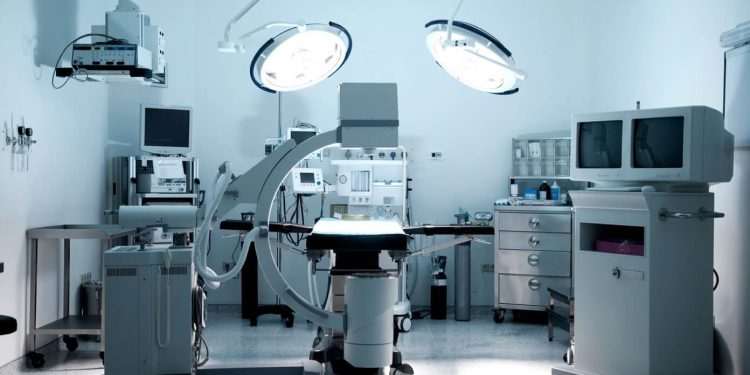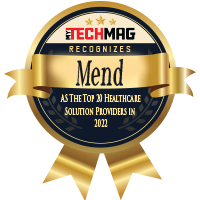Modernization is the driving force behind the medical device manufacturing segment. In the past, healthcare organizations have improved upon their medical tools and devices through invention and development in the fields of electronics, material science, and machinery technology. However, today’s medical reform policies and technologies are represented by the Internet of Things (IoT), Artificial Intelligence (AI), and various other new entrants.
Hospitals, clinics, and other healthcare facilities promote this transformation in the medical device manufacturing industry due to its wide-ranging benefits. The changing industry trends offer numerous value-added services to patients, payers, and healthcare professionals. With the introduction of new ideas, models, and assets, outstanding healthcare services embrace diverse trends, such as wearable, diagnostic instruments, wound care solutions, etc.
This sector alone has poised for 5.6% growth each year between 2017 and 2023. Health experts and marketers need to prepare and adapt to these new technologies and materials, plus geopolitical and socioeconomic trends in this segment.
The following medical device manufacturing trends represent the industry’s growth and solutions for better services.
1. Additive Manufacturing
Additive manufacturing (AM) or 3D printing, is now playing a vital role in developing the medical apparatus. According to SmarTech Publishing, around 3.2 million 3D-printed medical implants will be used across the globe by 2026. This more comprehensive acceptance of 3D printing technology creates a massive opportunity for medical device manufacturers.
Additive manufacturing helps the medical industry in the manufacturing and delivery of customized medicines. If you did not know, Spritam is the first FDA-approved 3D-printed drug launched in 2016. Unlike traditional medical device manufacturing methods such as casting, forging, milling, or fabrication, AM offers novel benefits.
- AM eradicates several designs for manufacturing constraints, letting new features be designed to benefit patients and surgeons.
- It helps medical device manufacturers in lessening the production cost. At the same time, it aids surgeons in reducing the in-theatre parts and human error.
- It helps the medical device makers produce multiple sizes or designs in one build, letting build layouts be tuned to meet multiple inventory demands.
- AM helps the industry produce customized parts, letting various custom designs be developed in one build or batch.
- It lets you design the implants to match the mechanical features of the body with the help of lattices and novel structures to lessen stress-shielding and aid bone ingrowth.
2. Innovative Materials and Designs
Growth in the connected technology will pave the way for the medical device innovations and raise the bar about its material choices and design for longer lifespans. For instance, the choice of novel materials to manage heat and battery life in wearable devices like wrist bands, watches, sensors, etc. Similarly, the use of compact and durable product housings for healthcare settings.
Medical device researchers and material suppliers regularly work towards determining the latest formulations to resolve existing problems. They identify the useful and novel materials to meet the current needs of healthcare organizations. The manufacturers integrating this trend into their everyday business operation can easily position themselves well in a crowded and competitive market.
Consider the case of thermoplastics and covered textures utilized to construct adaptable items with extra quality and sealed execution. One of the most weldable flexible materials used by the manufacturers today is known as polar molecular properties. This feature gives them their weldability; wherein producers can utilize it to create consistent participates in the material, making it suitable to house an adaptable PCB or something comparative.
3. Cloud-Based Solution
Medical device manufacturers began to embrace cloud technology, especially with the increasing pressure on healthcare providers to improve patient care at less cost. However, with the cloud-based solutions, they are capable of offering various help, such as:
- Reduced costs with no compromise on service quality.
- Easy deployment and lower maintenance.
- Quick collaboration across dissimilar product development networks.
- Reap superb ROI by being an early adopter of the cloud.
In our modern medical environment, a cloud-based solution has turned out to be more critical than ever. Albeit we are in the early days of cloud adoption, it has helped the medical device industry in several ways. At present, only 12% of the global healthcare supply chain market utilize cloud solution. Nonetheless, we expect this area to explode in the next five years, with a foreseen rise of 11.4% CAGR.
Also Read: COVID-19 Challenges & Opportunities for Medical Device Manufacturing Companies
4. Industry Regulations and Standards
Medical device manufacturers are influenced by regulations and standards designed by governments and industry setup. For example, the European Union is expected to bring in various revised regulations in 2020 that are said to have an impact on medical device makers. The EU’s new rule influences the global medical manufacturing segment by raising the bar for discrete device identification and supply chain monitoring.
Similarly, in 2019, the U.S. Food and Drug Administration (FDA) revealed the relaxation of premarket review obligation for more than a few medical product categories, such as plastic surgery, radiology, cardiology, neurology, urology, ophthalmology, gynecology, and others. This loosening of the endorsement procedure for clinical gadgets has opened a gigantic door for makers.
The administrative body has cleared the way for several medical products of Class I and Class II to reach customers quickly than before. As the FDA deals with the latest healthcare solutions and systems alongside the innovations in the medical field, we may come across much new compliance and regulation in the future.
Manufacturers can utilize this chance to capitalize on throughout 2020 and beyond. They have to honor the compulsions stated by industry groups or government agencies to ensure the safety and efficiency of healthcare devices and software in the medical segment.
5. Diversified Manufacturing Personnel
Diversity plays an increasingly pivotal role in the medical device manufacturing industry. By gearing up to address workforce inequities, meeting the explicit needs of a diverse population, one can reduce healthcare disparities across the globe with less or no hassle. The healthcare firms not investing in diverse personnel to connect with buyers from various networks will, without a doubt, risk negative open scrutiny and may lose significant pieces of the overall market share in a profoundly competitive environment.
Although it seems unrelated, the diversified workforce will impact the medical device manufacturing industry in terms of competence, capability, and accessible talent. In today’s digitized world, the entire talent pool is growing more diverse. The rising demand for skilled professionals has led to the staffing of women and veterans, a previously untouched segment of employees.
The manufacturing workforce comprised only 29% of women in 2016. However, the number is foreseen to grow in 2020 as manufacturers began realizing the importance of a more diverse and capable workforce.
To Sum It Up
The medical device manufacturing industry is changing considerably, breeding the embracement of smarter, more connected technologies. Healthcare facilities must work together with these medical device makers to navigate these trends and opportunities, and thereby deliver high-quality products to improve patient care.







